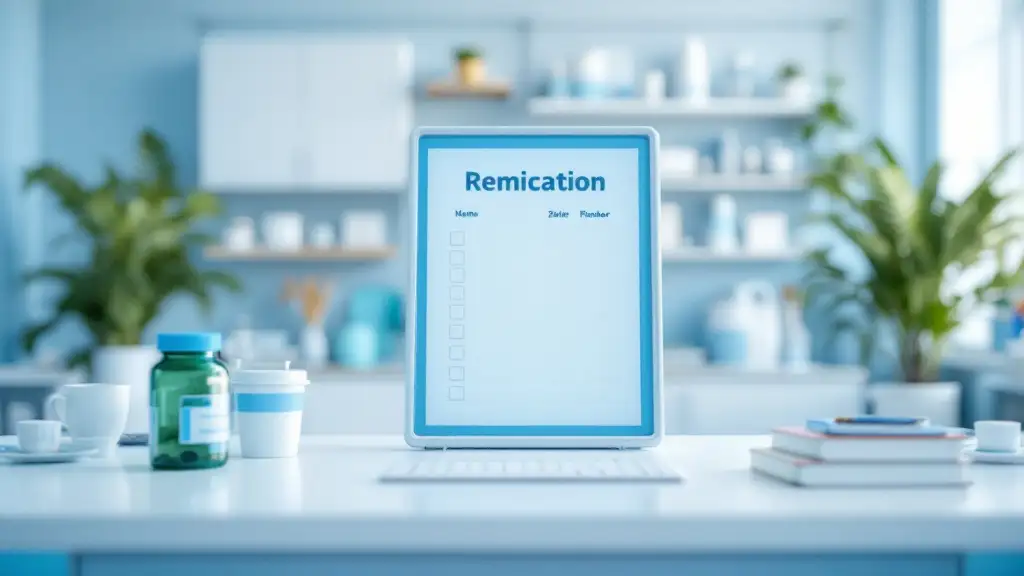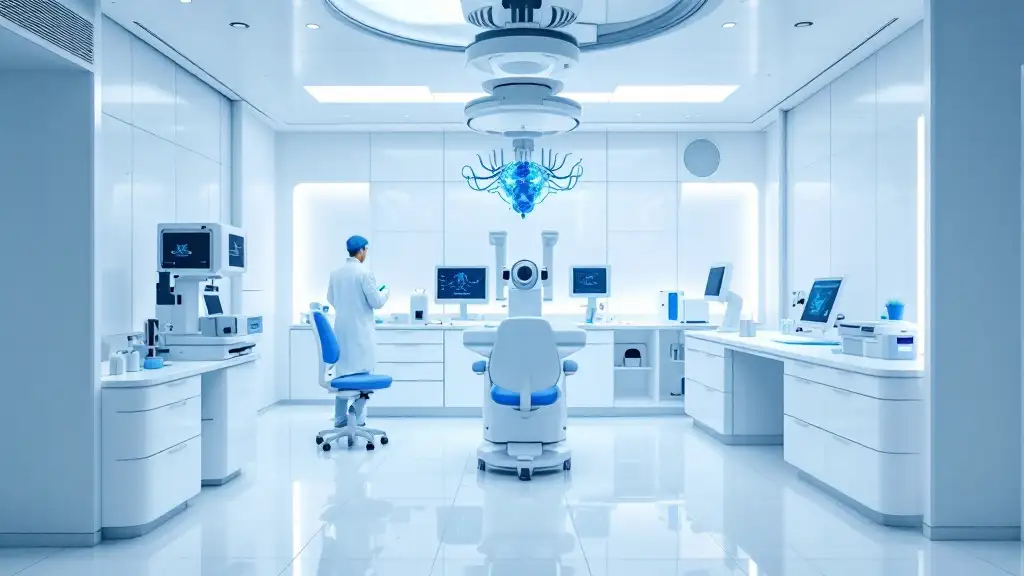Understanding and Navigating OCD and Related Disorders
Compulsive behaviors in adults, often stemming from Obsessive-Compulsive Disorder (OCD), can severely impair daily functioning and quality of life. Recognizing the nature of these behaviors, their underlying causes, and available treatment options is crucial for effective management. This article delves into the core aspects of OCD, explores how adults can access help, and highlights coping strategies to foster recovery.
What is OCD and What Are Its Symptoms and Causes?
What is obsessive-compulsive disorder (OCD), and what are its symptoms and causes?
Obsessive-compulsive disorder (OCD) is a mental health condition marked by persistent, unwanted thoughts called obsessions and repetitive actions known as compulsions. These obsessions often generate distress and anxiety, leading individuals to perform compulsions repeatedly in an attempt to ease their discomfort.
Typical obsessions include fears of germs or contamination, worries about losing control, disturbing sexual or religious thoughts, and a strong need for order or symmetry. For example, a person might constantly fear getting sick and therefore wash their hands excessively, or check if doors are locked multiple times.
Compulsions are behaviors performed to neutralize or alleviate the anxiety caused by obsessions. Common compulsions include excessive cleaning, ordering or arranging items, checking locks or appliances repeatedly, counting, and engaging in repetitive praying or verbal rituals.
The symptoms of OCD can significantly disrupt daily routines, employment, and social interactions. When obsessions or compulsions consume more than an hour daily or cause substantial distress or impairment, a diagnosis may be considered.
The origins of OCD are complex, involving genetic, biological, and environmental factors. Research suggests that abnormal activity in specific brain regions and differences in brain chemistry, especially serotonin pathways, play a role. Environmental influences include childhood trauma, stressful life events, and in some cases, infections like streptococcal bacteria, which have been linked to PANDAS (Pediatric Autoimmune Neuropsychiatric Disorders Associated with Streptococcal infections).
While OCD cannot be cured, various treatments greatly help manage symptoms. Cognitive-behavioral therapy (particularly Exposure and Response Prevention), medications such as SSRIs, and lifestyle changes like stress management and support networks can improve quality of life. Early diagnosis and comprehensive treatment approaches are essential in reducing the impact of OCD and helping individuals regain control over their lives.
More info search query: Understanding obsessive-compulsive disorder symptoms and causes
| Aspect | Details | Additional Info |
|---|---|---|
| Definition | Mental health disorder involving obsessions and compulsions | Involves uncontrollable thoughts and actions |
| Common Obsessions | Germ fears, losing control, taboo sexual or harm thoughts, order need | Recurrent, distressing, and time-consuming |
| Common Compulsions | Cleaning, ordering, checking, counting, repetitive prayers or words | Performed to reduce obsessive anxiety |
| Interference with Daily Life | Symptoms lasting over an hour daily, causing distress or impairing daily function | Significant impact if untreated |
| Causes | Genetics, brain activity and chemistry, environmental factors such as childhood trauma or infections like PANDAS | Complex, multi-factorial origins |
Understanding OCD involves recognizing these core patterns of thoughts and behaviors and seeking appropriate treatment when needed.
Main Treatment Options for Compulsive Behaviors in Adults
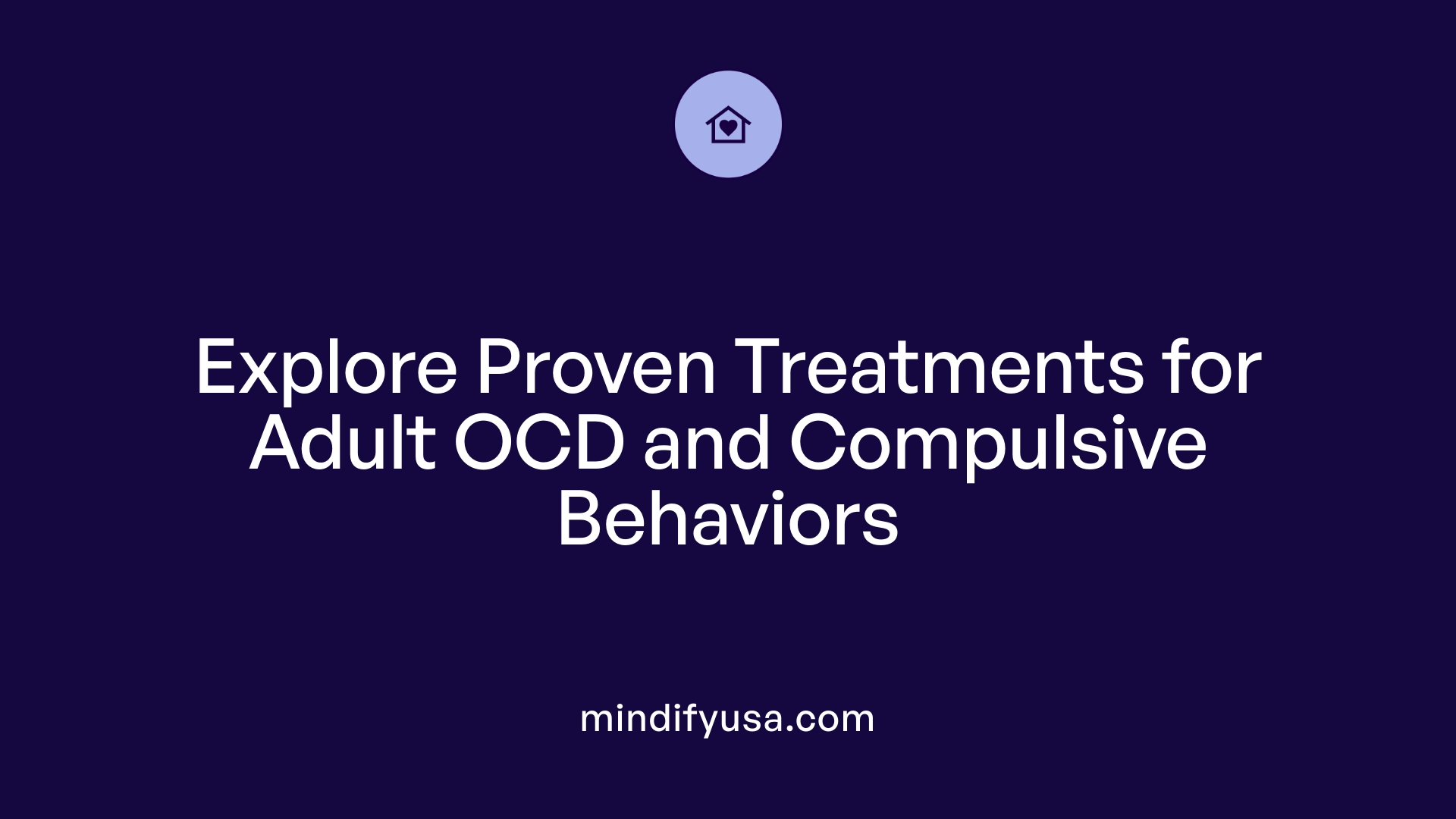
What are the main treatment options for compulsive behaviors in adults with OCD?
Treating compulsive behaviors associated with OCD in adults usually involves a combination of psychotherapy, medication, and, in some cases, advanced or invasive therapies for severe cases.
Psychotherapy options are often the first line of treatment. Cognitive-behavioral therapy (CBT), especially a specialized form called exposure and response prevention (ERP), is widely regarded as the most effective approach. ERP involves gradually exposing individuals to feared situations or thoughts without performing compulsive actions, helping them learn that their fears are unfounded and reducing the urge to compulsively act out rituals.
Medication options primarily include selective serotonin reuptake inhibitors (SSRIs), such as fluoxetine, fluvoxamine, paroxetine, and sertraline. The antidepressant clomipramine, a tricyclic, is also effective but is less commonly used due to side effects. These medications help increase serotonin levels in the brain and often work best when combined with psychotherapy. It typically takes 6 to 12 weeks for medications to show significant benefits, and they are usually continued for at least a year or longer for sustained relief.
Combination treatments—using both CBT and medication—are often more effective than either approach alone, especially in moderate to severe cases. This integrated approach offers the best chance of reducing obsessions and compulsions and improving quality of life.
Advanced therapies for severe cases include psychotherapies like Acceptance and Commitment Therapy (ACT), which focuses on accepting unwanted thoughts rather than fighting them. Additionally, support for managing stress through routines involving sleep, exercise, and social support plays a supportive role.
Invasive options under supervision are reserved for the most resistant and severe cases. These include brain stimulation techniques such as transcranial magnetic stimulation (rTMS) and, in some instances, deep brain stimulation (DBS). These procedures are approved by the FDA for certain cases and are performed under strict medical supervision.
In some rare, highly resistant cases, surgical interventions like cingulotomy or capsulotomy may be considered. These invasive procedures involve creating controlled lesions in specific areas of the brain to alleviate symptoms. They are performed with careful evaluation and long-term monitoring.
While seeking these treatments, managing stress through structured routines, relaxation techniques, and social support is essential. Patients are encouraged to work closely with mental health professionals to develop a personalized treatment plan that addresses their specific needs.
Summary of Treatment Modalities
| Treatment Type | Main Examples | Typical Use Case | Notes |
|---|---|---|---|
| Psychotherapy | CBT, ERP, ACT | Mild to moderate OCD | Most effective for many adults |
| Medication | SSRIs (fluoxetine, sertraline), clomipramine | Moderate to severe OCD | Often combined with therapy |
| Advanced/N neuromodulation | rTMS, deep brain stimulation | Severe, treatment-resistant OCD | Research-supported, FDA-approved for some cases |
| Surgical interventions | Cingulotomy, capsulotomy | Very severe, resistant cases | Last resort options |
Effective management of obsessive-compulsive behaviors in adults often hinges on tailored, multidisciplinary treatment strategies. With ongoing support and professional guidance, many individuals find relief and improved functioning.
Accessing Support and Help Resources
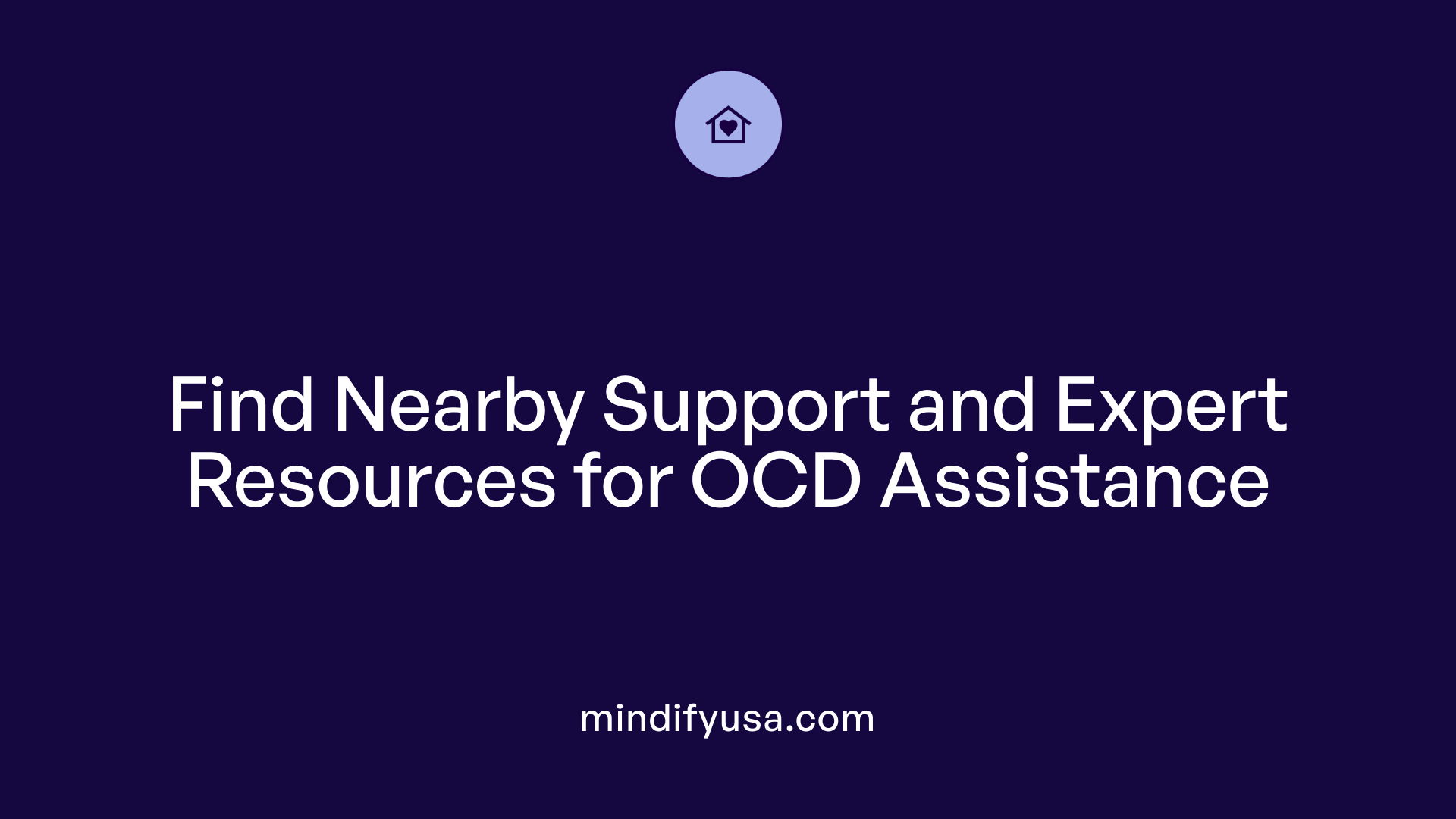
How can individuals with OCD access support and help resources?
People living with OCD have multiple avenues to find the support they need. The first step is connecting with healthcare professionals, such as psychiatrists, psychologists, or licensed therapists who specialize in OCD treatment. Many healthcare providers can be found through directories like Psychology Today or by referring to local mental health clinics.
Support groups—both online and in person—are vital for emotional reassurance and understanding that one is not alone. Online communities, such as OCD Support Groups on Groups.io or Facebook groups like 'Everything OCD,' provide accessible platforms where members share experiences, coping strategies, and encouragement. Support groups run by organizations like the International OCD Foundation (IOCDF) and NOCD also offer structured sessions that are guided by trained facilitators.
Educational and community resources are available to enhance understanding of OCD. Universities, hospitals, and mental health organizations often provide brochures, fact sheets, and workshops. Community outreach programs aim to reduce stigma and promote awareness about OCD.
Several organizations play a crucial role in providing help and information. The IOCDF provides extensive resources, including a directory of local and online support groups, educational materials, and access to specialized OCD clinics. NOCD offers virtual therapy options, making professional help more accessible for many adults.
Peer support and personal stories can be powerful. Listening to podcasts, reading blogs, or watching videos featuring individuals who have managed OCD successfully can inspire hope and teach effective coping strategies. These stories often highlight the importance of seeking treatment, sticking with therapy, and building a support network.
How can individuals with OCD access available resources?
By utilizing these channels—professional evaluation, online and offline support groups, educational materials, and personal stories—adults with OCD can find tailored support that fosters recovery and enhances their quality of life. Early and ongoing engagement with these resources can significantly aid in managing symptoms effectively.
Coping Strategies for Managing OCD Symptoms
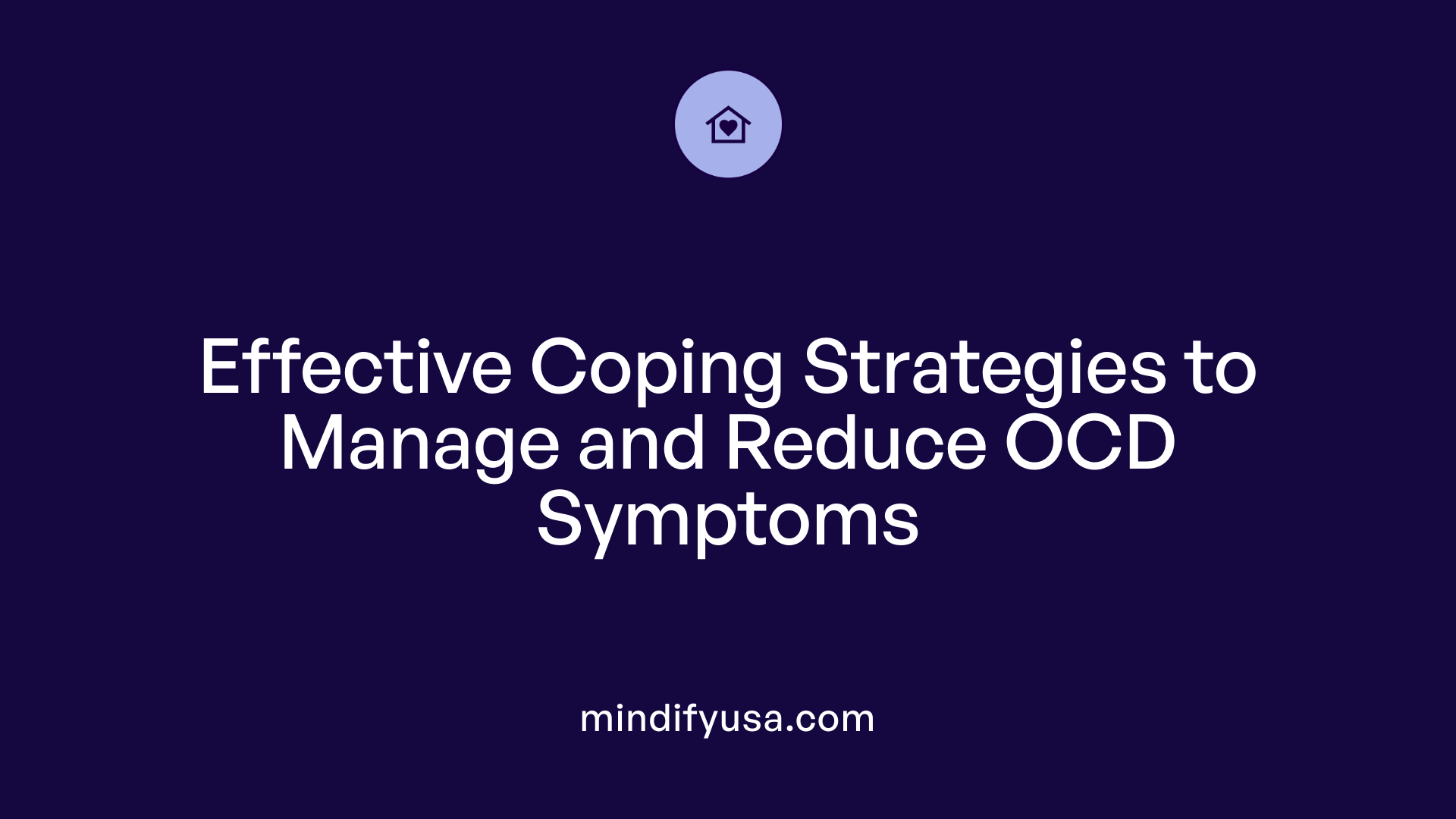
What are effective coping strategies for managing OCD symptoms?
Managing OCD symptoms can be challenging, but several proven strategies can help individuals gain control and reduce the impact of their obsessions and compulsions. One foundational approach is employing evidence-based behavioral techniques like Exposure and Response Prevention (ERP). This therapy involves carefully and gradually exposing oneself to feared thoughts or situations, and then resisting the urge to perform compulsive behaviors. Over time, ERP helps diminish anxiety and compulsive responses.
Keeping an OCD journal is another useful method. Recording triggers, thoughts, and compulsive behaviors can reveal patterns and specific stressors, allowing for targeted interventions. This process also facilitates communication with mental health professionals, making therapy more effective.
Mindfulness and acceptance strategies have gained recognition for their role in managing OCD. Techniques such as mindfulness meditation encourage individuals to observe their intrusive thoughts without judgement, helping to lessen rumination and emotional distress. Acceptance and Commitment Therapy (ACT), a form of mindfulness, promotes acknowledging OCD thoughts as temporary and not controlling life, thus fostering emotional distancing from obsessions.
Resisting compulsions is a key skill. Recognizing the urge, understanding its temporary nature, and deliberately delaying or reducing ritualistic behaviors can decrease their power over time. Practicing this resistance can be supported by distraction techniques like engaging in a different activity, focusing on breathing exercises, or visualizing calming scenes.
Building a supportive network is also essential. Connecting with trusted family, friends, or peer support groups provides emotional reassurance and practical advice. Support groups, such as those organized by the International OCD Foundation, offer a platform for sharing experiences, strategies, and encouragement.
Lifestyle modifications contribute significantly to long-term management. Regular exercise, balanced nutrition, adequate sleep, and stress management practices—such as yoga or deep breathing—help decrease baseline anxiety levels. Reducing stress is crucial because heightened stress can intensify OCD symptoms.
Establishing a routine around therapy sessions and treatment adherence enhances symptom control. Setting realistic goals, practicing patience, and understanding that progress may be gradual help prevent discouragement. Recognizing that OCD is a medical condition, not a moral failing, empowers individuals to approach their symptoms with compassion rather than self-criticism.
In summary, effective management of OCD involves a combination of behavioral techniques, mindfulness, resistant practice, social support, and lifestyle adjustments. These approaches, when integrated into a comprehensive treatment plan, can significantly improve quality of life and functional independence.
Seeking Professional Help for OCD and Compulsive Behaviors
How do I seek professional help for compulsive behaviors related to OCD?
Finding the right support for OCD involves connecting with qualified healthcare professionals who can provide effective treatment. The first step is usually consulting a licensed mental health provider, such as a psychologist or psychiatrist, who has experience working with OCD. Resources like the International OCD Foundation (IOCDF) Resource Directory list over 300 support and treatment groups worldwide, including options for adults.
When seeking help, consider whether the provider offers evidence-based therapies like Cognitive Behavioral Therapy (CBT) and Exposure and Response Prevention (ERP), which are among the most effective treatments for OCD. Many providers also prescribe medications such as selective serotonin reuptake inhibitors (SSRIs) that can help reduce symptoms.
Online therapy platforms and telehealth services have made accessing expert care easier, especially for those living in remote areas or with limited mobility. It’s important to verify the provider’s experience with OCD and their familiarity with research-supported treatment modalities.
Questions to ask providers
Before starting treatment, asking the right questions can ensure you receive personalized care tailored to your needs. Some pertinent questions include:
- What experience do you have treating OCD?
- Do you use evidence-based treatments like ERP?
- Are you comfortable prescribing medications if needed?
- How long do you expect treatment to last?
- Can you coordinate with my primary care provider?
These questions can help gauge the provider’s expertise and approach to care.
Treatment planning and collaboration
Effective management of OCD often involves a collaborative approach. Your healthcare provider will work with you to develop a treatment plan that may include psychotherapy, medication, or a combination of both. Regular assessments will help track progress, and adjustments can be made based on your response to treatment.
Therapists skilled in ERP help patients face their fears gradually without performing compulsions, reducing stress and obsessive thoughts over time. Medication management involves monitoring side effects and effectiveness, often requiring patience as benefits can take several weeks to manifest.
Importance of early intervention
Early diagnosis and treatment can greatly improve the prognosis of OCD. Addressing symptoms promptly prevents them from becoming more ingrained and disruptive. Early intervention can also reduce the emotional toll and improve overall functioning.
Delaying treatment might lead to increased distress, worsening compulsions, and broader impacts on personal and professional life. Seeking help at the first signs of problematic obsessions or compulsions is advisable.
Role of healthcare providers
Healthcare professionals play a crucial role in guiding individuals through recovery. They not only provide evidence-based treatments but also offer support, education, and reassurance. Clinicians help identify triggers, develop coping strategies, and teach techniques to manage stress.
In severe cases, providers may recommend additional interventions such as brain stimulation therapies like transcranial magnetic stimulation (rTMS) or deep brain stimulation. Post-treatment, ongoing support and possibly participation in support groups can aid sustained recovery.
Overall, engaging with healthcare providers early, asking informed questions, and collaborating on a tailored treatment plan are essential steps toward managing OCD effectively and regaining control over daily life.
Recognizing the Signs and Symptoms Requiring Early Intervention
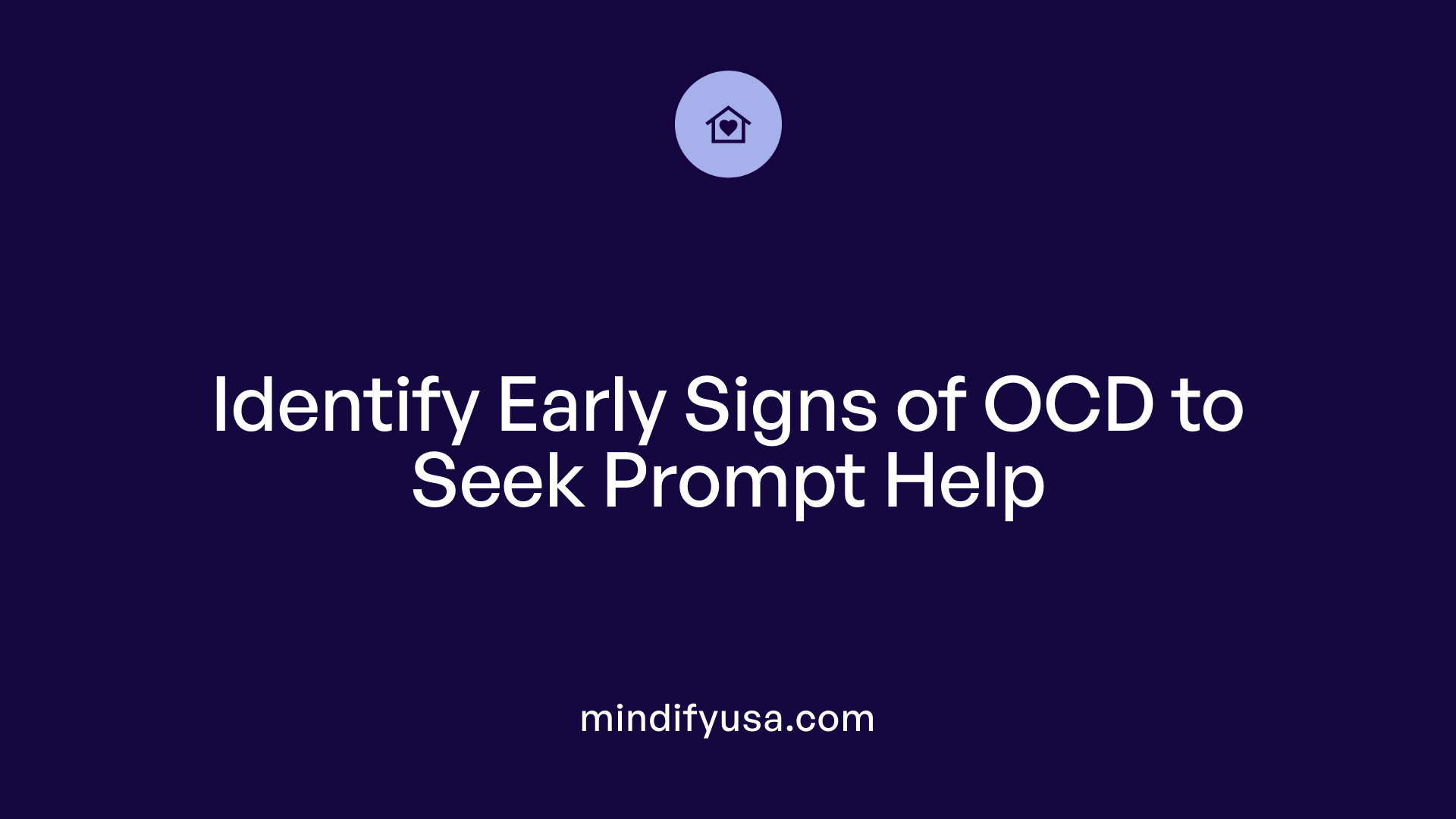
What are the signs and symptoms of OCD that indicate the need for early intervention?
Obsessive-Compulsive Disorder (OCD) often presents with a range of signs that can signal the need for prompt diagnosis and treatment. Central to these signs are persistent, intrusive thoughts—called obsessions—that are unwanted, distressing, and often unprovoked. Common obsessions include fears of germs and contamination, worries about causing harm to oneself or others, and obsessive thoughts related to religion, sexuality, or orderliness.
Alongside these obsessions, individuals frequently engage in compulsive behaviors—repetitive mental acts or physical routines—aimed at reducing anxiety or neutralizing obsessive thoughts. Typical compulsions encompass excessive cleaning, constant checking of locks or appliances, ordering and arranging items meticulously, mental rituals such as counting, and repeated prayer or words.
Importantly, the impact of these symptoms extends far beyond themselves. When obsessions and compulsions become so frequent and intense that they consume more than an hour daily, they significantly disrupt daily routines, work, social interactions, and personal responsibilities.
The early signs to watch for include behaviors that are egodystonic—meaning the individual recognizes that their actions or thoughts are unreasonable and distressing—but cannot control or stop them. These symptoms gradually worsen under stress and may initially be subtle but tend to intensify over time.
Recognizing these early signs is crucial because they often precede more severe impairment. Early intervention leads to better management outcomes, reduces distress, and helps individuals regain control of their lives. When obsessions and compulsions interfere notably with daily functioning, seeking professional evaluation becomes essential to facilitate timely treatment and improve prognosis.
Distinguishing OCD from Related Disorders and Other Compulsive Behaviors
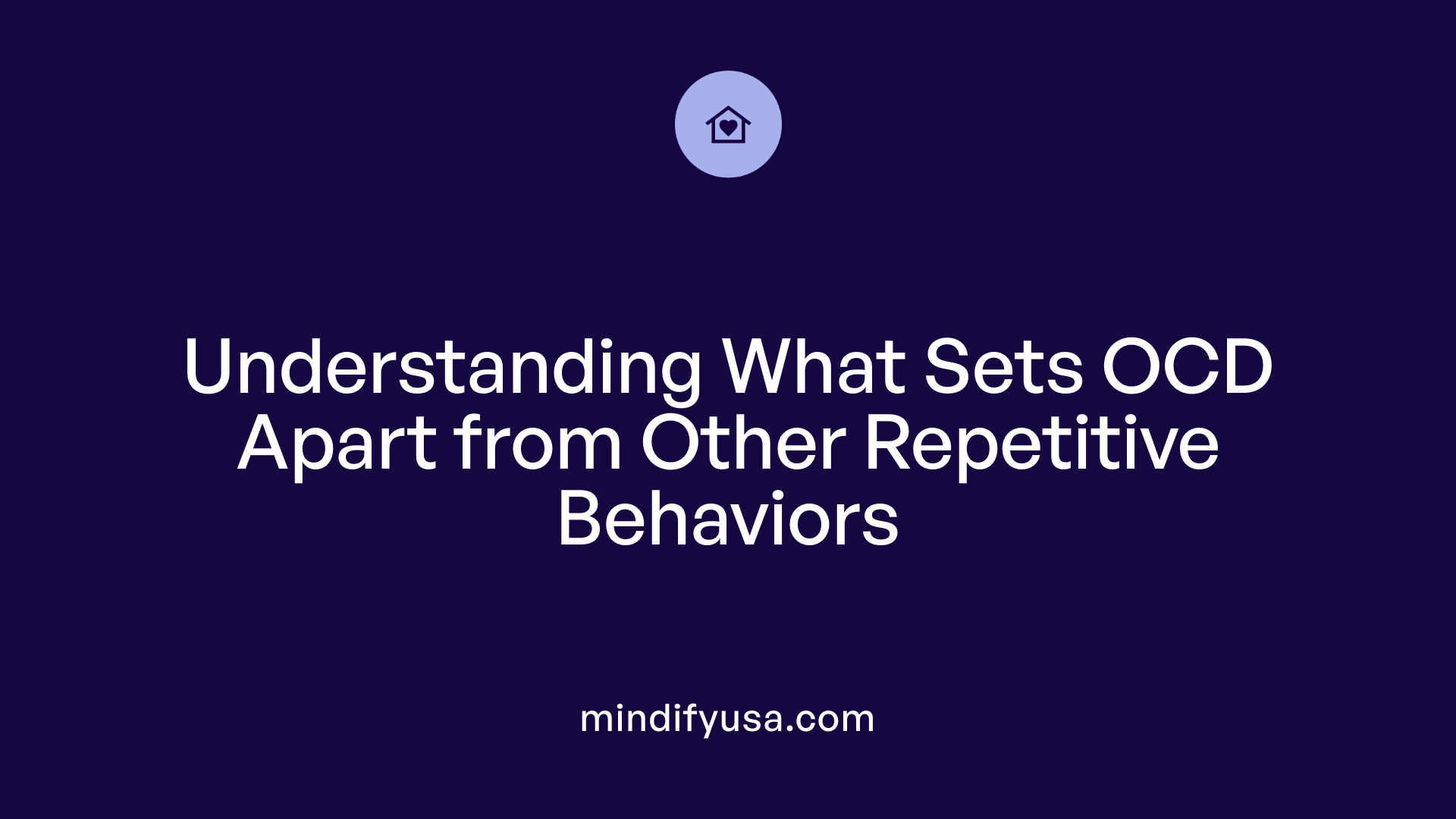
What are the core features of OCD?
OCD, or Obsessive-Compulsive Disorder, is characterized by two main aspects: obsessions and compulsions. Obsessions are unwanted, intrusive thoughts, images, or urges that repeatedly disturb the individual, such as fears of germs, harm, or the need for order. Compulsions are repetitive behaviors or mental acts performed in response to these obsessions, like excessive cleaning, checking, or ordering. These behaviors are intended to reduce anxiety caused by the obsessions, but they often become time-consuming and interfere with daily functioning.
For a diagnosis of OCD, symptoms must last more than an hour daily, cause significant distress, or impair social, occupational, or other important areas of life. Individuals with OCD often recognize their obsessions as irrational but feel driven to perform compulsions despite knowing they are unwarranted.
Themes of obsessions and compulsions
OCD obsessions tend to revolve around themes such as contamination fears, doubting whether tasks are done properly, taboo thoughts involving sex or religion, and a strong need for symmetry or order. These obsessions lead to compulsions like hand washing, ordering items, checking locks or appliances repeatedly, counting, or mental rituals like praying or repeating words.
Compulsions are performed to temporarily relieve the distress caused by obsessions. However, they often become habitual, executed despite the individual’s awareness that they are irrational or unnecessary, creating a cycle that is hard to break.
How does OCD differ from other related disorders or types of compulsive behaviors?
OCD is distinct from other disorders that involve repetitive behaviors but differ significantly in motivation, insight, and underlying themes.
| Disorder | Core Focus | Typical Behaviors | Insight/ Awareness | Underlying Causes |
|---|---|---|---|---|
| OCD | Unwanted thoughts (obsessions) | Rituals, checking, cleaning | Usually aware of irrationality | Intrusive thoughts driven by anxiety or fear |
| Hoarding Disorder | Difficulty discarding possessions | Accumulating clutter | May lack insight | Protects against fear of losing items |
| Body Dysmorphic Disorder | Preoccupation with perceived flaws | Excessive grooming, mirror checking | Varies, often limited | Distorted self-image |
| Trichotillomania & Skin Picking | Hair pulling, skin picking | Repetitive pulling/ picking | Usually aware but feel compelled | Stress relief or anxious habits |
| Tic Disorders (e.g., Tourette’s) | Involuntary movements or sounds | Motor or vocal tics | Lack of voluntary control | Neurological, involuntary |
| OCPD | Rigid perfectionism | Excessive organization, control | Typically aware; ego-syntonic | Personality trait |
| Psychotic Disorders | Delusions, hallucinations | False beliefs, perceptual disturbances | Usually lack insight | Brain chemistry abnormalities |
In contrast, OCD’s distinguishing feature is the presence of persistent intrusions (obsessions) that individuals want to suppress, and the compulsions are performed to mitigate the anxiety or prevent feared outcomes. Recognizing whether someone understands the irrational nature of their behaviors aids in differentiating OCD from these other conditions.
What is the role of insight and awareness?
Insight varies among individuals with OCD. Many are aware that their obsessions and compulsions are unreasonable or excessive, a feature called ego-dystonicity. This recognition often motivates them to seek help.
However, some may have poor insight or be unaware that their behaviors are problematic, especially in severe cases or when competing disorders coexist. Clarity about the irrationality of compulsions influences the choice of treatment; for instance, cognitive-behavioral therapy with exposure and response prevention (ERP) hinges on the patient’s ability to recognize and challenge these thoughts.
In sum, understanding the core features of OCD, including its themes and distinctions from similar disorders, is critical for accurate diagnosis and effective treatment. When clinicians identify the presence of intrusive thoughts combined with compulsions, especially with insight into their irrationality, they can tailor interventions that directly address the disorder’s unique aspects.
Recent Advances in OCD Research and Treatment
What are recent advances in research and treatment for OCD?
Recent progress in understanding and managing Obsessive-Compulsive Disorder (OCD) has been significant. Researchers have identified around 250 genes associated with OCD, which offers deep insights into its underlying neurobiology. This genetic knowledge helps to move towards more targeted, personalized treatments.
One of the innovative approaches includes combining medications like d-cycloserine with neuromodulation techniques such as intermittent theta burst stimulation (iTBS). These combinations have demonstrated promising results, showing noticeable improvements in symptoms and offering hope for those with severe or treatment-resistant OCD.
In addition, new pharmacological strategies are focusing on modulating neurotransmitter systems beyond serotonin. Drugs targeting glutamate pathways are currently under investigation, as glutamate plays a crucial role in brain signaling processes involved in OCD.
Emerging research is also exploring the rapid effects of substances like ketamine and other psychedelics, which may provide quick symptom relief. These treatments are still in experimental stages but show potential for revolutionizing OCD care.
Neuromodulation techniques continue to improve. Deep Brain Stimulation (DBS) and transcranial magnetic stimulation (TMS) are gaining ground, especially for patients unresponsive to conventional therapies. Advances in these areas have led to more precise targeting and less invasive procedures.
Furthermore, cutting-edge science utilizing artificial intelligence and molecular biology aims to discover new biomarkers and molecular targets. This research could enable precision medicine, tailoring treatments based on individual genetic and biological profiles.
Overall, these innovations mark a promising era in OCD research, moving toward therapies that are more effective, faster-acting, and personalized to each patient’s unique neurobiology.
| Research Focus | Description | Future Potential |
|---|---|---|
| Genetic Studies | Identification of 250+ OCD-linked genes | Development of gene-targeted therapies |
| Pharmacotherapy | New drugs modulating glutamate and serotonin | Faster, more effective medication options |
| Neuromodulation | Techniques such as DBS and TMS | Non-invasive options for severe cases |
| Innovative Substances | Use of ketamine and psychedelics | Rapid symptom relief approaches |
| Molecular Research | Biomarkers and molecular targets | Personalized medicine solutions |
Continued research and clinical trials play vital roles in transforming OCD treatment, offering hope for more durable and rapid breakthroughs in the future.
Managing OCD's Impact on Daily Life and Long-term Strategies
How can individuals living with OCD better manage the impact of their symptoms on daily life?
Managing OCD effectively involves a multifaceted approach that combines therapy, medication, lifestyle modifications, and support systems. Evidence-based therapeutic techniques like exposure and response prevention (ERP) are central to treatment. ERP helps individuals confront feared situations or thoughts without performing compulsions, gradually reducing anxiety and the frequency of compulsive behaviors.
Medication, particularly selective serotonin reuptake inhibitors (SSRIs), can complement therapy by alleviating symptoms. When medication and psychotherapy are used together, many individuals experience significant improvements in their daily functioning.
Self-care routines play an important role. Practices such as mindfulness meditation, regular exercise, maintaining a balanced diet, and ensuring sufficient sleep help lower baseline stress and build resilience against triggers. Learning to recognize early signs of worsening symptoms allows for proactive management.
Building a strong support network is vital. Engaging family members, friends, and support groups provides emotional encouragement, shared experiences, and coping strategies. Support groups, in particular, offer a sense of community and understanding, helping individuals realize they are not alone in their struggles.
Being informed about OCD enhances self-awareness and fosters acceptance. Understanding the nature of obsessions and compulsions can lessen guilt and shame, empowering individuals to take active steps in their treatment journey. Open communication with loved ones and healthcare professionals ensures that challenges are addressed collaboratively and effectively.
Long-term management often involves ongoing therapy sessions, medication adherence, and lifestyle adjustments. Adjusting treatment plans as needed—based on symptom fluctuations—can optimize quality of life. With consistent effort and support, many people with OCD lead meaningful, productive lives, effectively managing symptoms and minimizing their impact.
Building resilience and support systems
Resilience can be strengthened through skills such as stress management, problem-solving, and emotional regulation. Participating in activities that promote well-being, such as hobbies or relaxation techniques, maintains mental health stability.
Community and family support act as anchors. Educating loved ones about OCD helps them provide empathetic support and avoid inadvertently reinforcing compulsive behaviors. Support groups are especially effective, creating a safe space for sharing strategies and gaining motivation.
Lifestyle adjustments for stress reduction
Implementing routines like regular exercise, healthy eating, and adequate sleep reduces anxiety levels. Practices such as yoga, deep breathing exercises, and mindfulness can help manage stress triggers.
Minimizing exposure to known stressors or triggers, when possible, is also helpful. Setting manageable goals and avoiding perfectionism lessen pressure, enabling better control over OCD symptoms.
Education and self-awareness
Learning about OCD from reputable sources increases understanding and self-efficacy. Recognizing personal patterns, early warning signs, and effective coping strategies enhances control.
Self-awareness encourages individuals to practice self-compassion, acknowledging that setbacks are part of recovery. This mindset fosters patience and persistence in managing the disorder.
Role of family and community support
Support from family members and the community fosters a nurturing environment. Involving loved ones in therapy sessions can improve understanding and cooperation.
Communities and support groups provide platforms for sharing experiences, exchanging coping tips, and reducing feelings of isolation. These networks are instrumental in sustaining long-term management efforts.
In summary, comprehensive management of OCD includes evidence-based therapies, medication when necessary, lifestyle changes, education, and strong emotional support. These elements together help individuals mitigate the disorder’s effects, enhance resilience, and lead fulfilling lives.
Empowering Adults to Seek Help and Thrive
Living with compulsive behaviors such as OCD can be challenging, but effective treatment options and support systems are available to empower individuals toward recovery. Recognizing early signs, seeking professional help, and actively engaging in therapeutic strategies can significantly reduce the disorder's impact. Building awareness, maintaining lifestyle balance, and connecting with communities and resources can foster resilience and improve quality of life. With ongoing research continuing to refine and develop innovative treatments, adults facing compulsive behaviors have promising pathways toward managing their symptoms and achieving well-being.
References
- Obsessive-Compulsive Disorder: When Unwanted Thoughts or ...
- Support Groups & Treatment Groups - International OCD Foundation
- OCD (Obsessive-Compulsive Disorder): Symptoms & Treatment
- Mental health problems | Helping someone who has OCD - Mind
- Obsessive-compulsive Disorder | National Alliance on Mental Illness ...
- Obsessive-compulsive disorder (OCD) - Symptoms and causes
- Compulsive Behaviors | Psychology Today
































































































